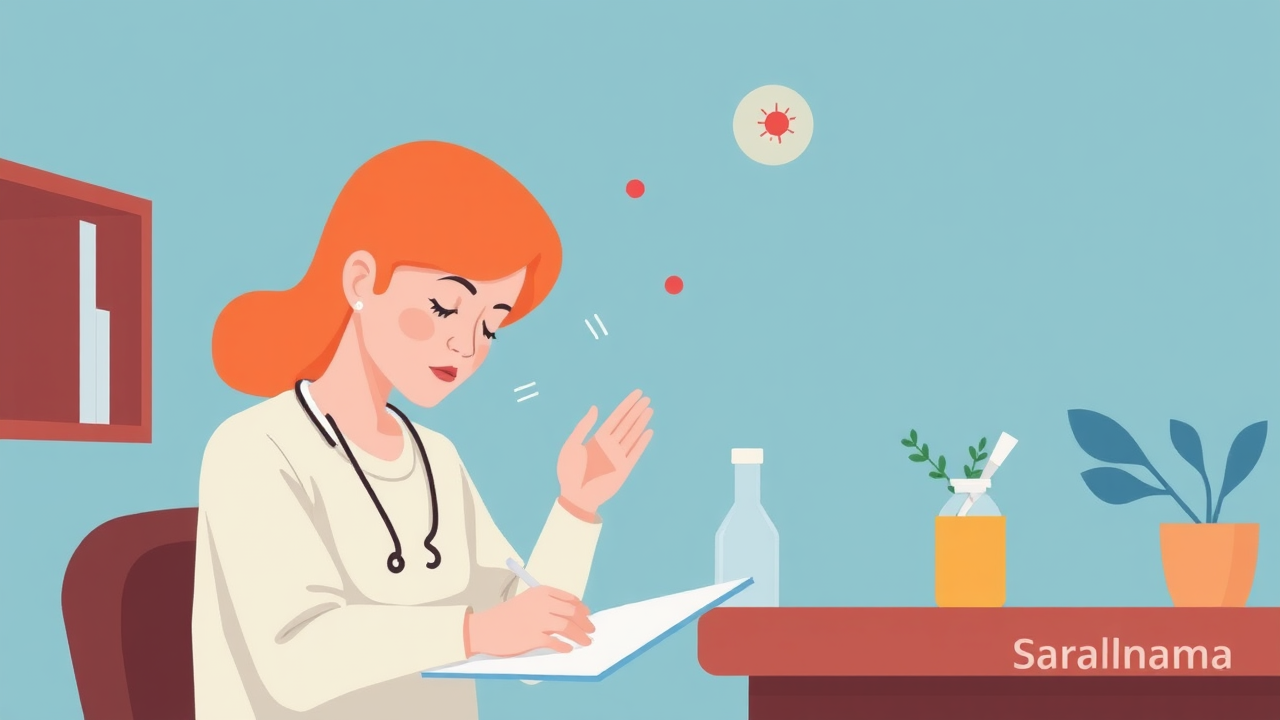Tuberculosis, often viewed as a disease of the past, continues to affect thousands in modern India. The journey from persistent fever and cough to a confirmed diagnosis of pulmonary tuberculosis can be confusing and frightening. Many patients initially experience symptoms that mimic common infections—high fever, sore throat, and relentless coughing. Despite following medical advice, the fever persists, and standard tests reveal little until more specific investigations are conducted. Pulmonary tuberculosis is a bacterial infection caused by Koch's bacillus that damages lung tissue, leading to cough, fever, weight loss, and weakened immunity. If left untreated, it can be fatal. The disease spreads easily through coughing, sneezing, or even talking, making isolation and precautions essential. Diagnosis often takes time because early sputum tests can return negative results due to low bacterial count or poor sample quality. Treatment involves a combination of antibiotics taken for six to nine months, and the side effects can be harsh, including nausea, rashes, and discolored urine. India's National TB Elimination Programme tracks every patient through the Nikshay system, providing free treatment, financial support, and nutrition kits. Recovery varies among individuals—some resume normal life quickly, while others experience lingering fatigue and breathlessness. The experience serves as a reminder that tuberculosis remains a significant public health challenge requiring vigilance, timely diagnosis, and complete adherence to treatment.

Recognizing Symptoms and the Diagnostic Struggle
Initial symptoms of pulmonary tuberculosis often resemble common illnesses, making early detection difficult. Patients experience persistent high-grade fever, sore throat, and continuous cough that do not respond to standard treatments. Blood tests may appear normal, and chest X-rays might show only mild lung infection. Even sputum tests can repeatedly return negative results, especially in early stages when bacterial count is low or when the infection is outside the lungs. One patient recalled coughing up blood and experiencing sharp chest pain before finally being referred to a specialized government hospital. Another patient had three negative sputum tests despite worsening symptoms. It was only after a chest CT scan that the true extent of the infection became visible. Doctors explain that tuberculosis is often mistaken for pneumonia because both affect the lungs, but pneumonia does not turn into tuberculosis—it simply weakens immunity and can unmask a hidden infection. The delay in diagnosis causes anxiety and allows the disease to progress, emphasizing the need for thorough investigation when symptoms persist.
Living Through Treatment and Its Side Effects
Treatment for tuberculosis involves taking a combination of antibiotics for six to nine months, and the medicines can be extremely harsh on the body. Patients often experience nausea, rashes, facial swelling, and discolored urine that turns brown or reddish. Weight loss is one of the most visible symptoms, with some patients losing several inches and surviving on bland diets of porridge and fruits. Ironically, those unaware of the illness often praise the weight loss as a fitness transformation. One patient had her right lung completely affected and was advised surgery to drain fluid, but chose medication instead. Another patient, a diabetic with good immunity, experienced relatively controlled symptoms. However, for some, the pain is unbearable—severe chest pain and coughing fits that disrupt daily life. Incomplete medication can lead to drug-resistant tuberculosis, which is harder to treat. Doctors emphasize the importance of following the full course, maintaining a healthy diet, getting adequate rest, and avoiding alcohol and smoking. The intensity of infection and response to treatment varies greatly from person
Government Support and Life After Recovery
India monitors tuberculosis cases closely through the National TB Elimination Programme, which aims to eradicate the disease by 2025. Every diagnosed patient is enrolled in the Nikshay system and assigned a unique identification number to track treatment progress. Authorities regularly follow up with patients who miss doses, urging them not to discontinue treatment. In the early phase, patients must visit centers frequently to take their medication under supervision, ensuring compliance. Under the Nikshay Poshan Yojana, each patient receives a monthly allowance of ₹500–1,000 and sometimes a nutrition kit containing peanuts, rice, oil, and pulses. Recovery experiences vary widely. Some patients forget they ever had the disease, though they may tire easily for months. Others experience increased appetite and weight gain post-treatment. Chest X-rays may show permanent patches on the lungs that doctors confirm are harmless. However, some patients continue to feel breathless and catch colds more frequently. For many, tuberculosis leaves not just physical scars but also the memory of a difficult fight and the realization that recovery brings
Source: Link
